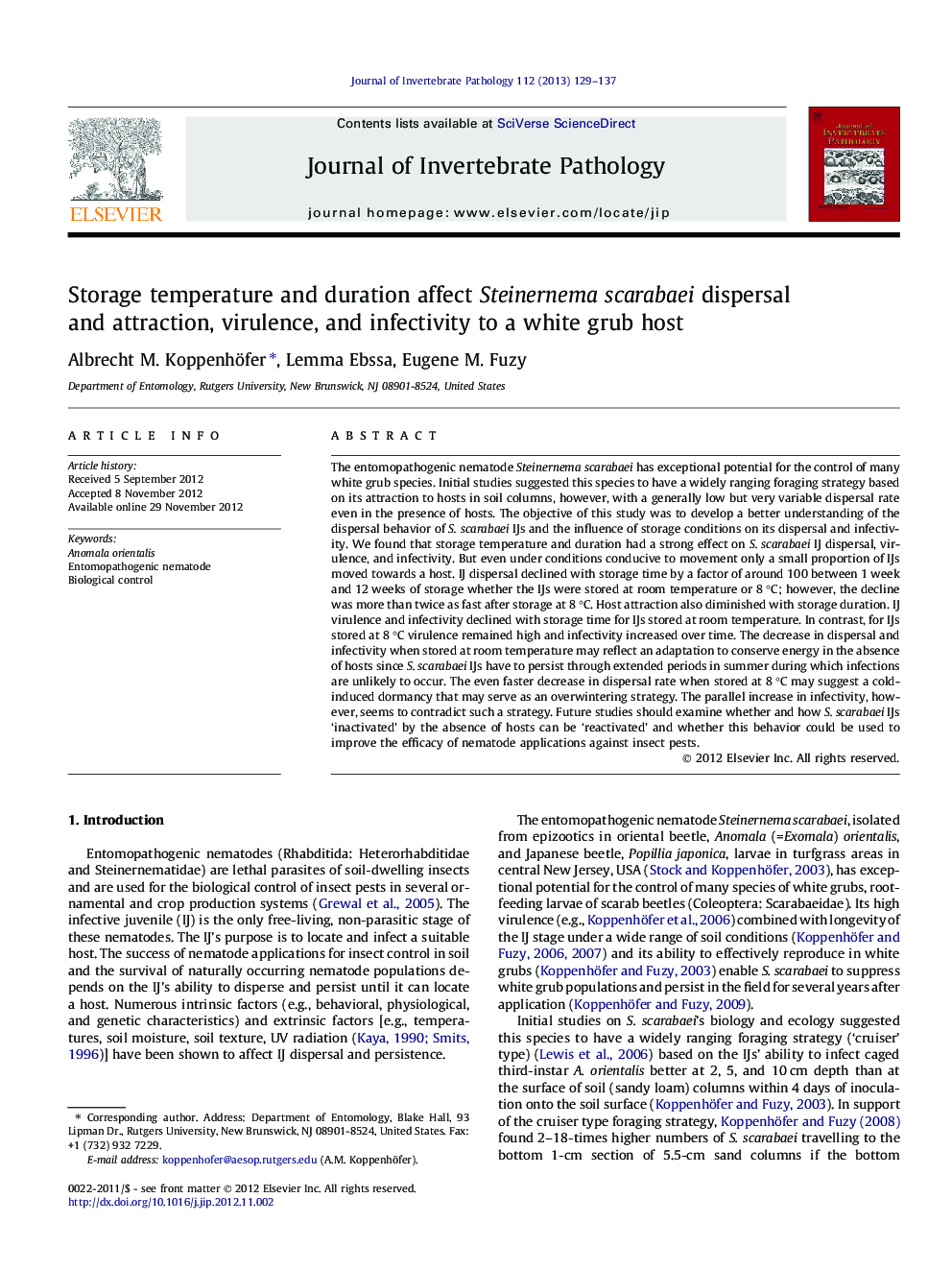| کد مقاله | کد نشریه | سال انتشار | مقاله انگلیسی | نسخه تمام متن |
|---|---|---|---|---|
| 6389634 | 1329895 | 2013 | 9 صفحه PDF | دانلود رایگان |
The entomopathogenic nematode Steinernema scarabaei has exceptional potential for the control of many white grub species. Initial studies suggested this species to have a widely ranging foraging strategy based on its attraction to hosts in soil columns, however, with a generally low but very variable dispersal rate even in the presence of hosts. The objective of this study was to develop a better understanding of the dispersal behavior of S. scarabaei IJs and the influence of storage conditions on its dispersal and infectivity. We found that storage temperature and duration had a strong effect on S. scarabaei IJ dispersal, virulence, and infectivity. But even under conditions conducive to movement only a small proportion of IJs moved towards a host. IJ dispersal declined with storage time by a factor of around 100 between 1 week and 12 weeks of storage whether the IJs were stored at room temperature or 8 °C; however, the decline was more than twice as fast after storage at 8 °C. Host attraction also diminished with storage duration. IJ virulence and infectivity declined with storage time for IJs stored at room temperature. In contrast, for IJs stored at 8 °C virulence remained high and infectivity increased over time. The decrease in dispersal and infectivity when stored at room temperature may reflect an adaptation to conserve energy in the absence of hosts since S. scarabaei IJs have to persist through extended periods in summer during which infections are unlikely to occur. The even faster decrease in dispersal rate when stored at 8 °C may suggest a cold-induced dormancy that may serve as an overwintering strategy. The parallel increase in infectivity, however, seems to contradict such a strategy. Future studies should examine whether and how S. scarabaei IJs 'inactivated' by the absence of hosts can be 'reactivated' and whether this behavior could be used to improve the efficacy of nematode applications against insect pests.
Highlights⺠Storage conditions strongly affected S. scarabaei infective juveniles (IJs). ⺠Dispersal and host attraction declined with IJ storage time for S. scarabaei. ⺠Dispersal declined faster for S. scarabaei IJs stored at room temperature than at 8 °C. ⺠Infectivity declined with storage time for S. scarabaei IJs stored at room temperature. ⺠Infectivity increased with storage time for S. scarabaei IJs stored at 8 °C.
Journal: Journal of Invertebrate Pathology - Volume 112, Issue 2, February 2013, Pages 129-137
